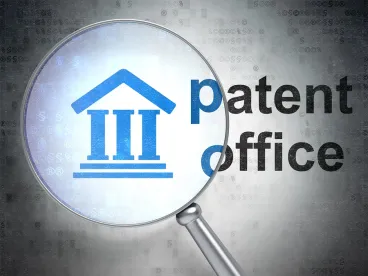Addressing limitations on the role of the Patent Trial and Appeal Board (PTAB), the US Court of Appeals for the Federal Circuit explained that the PTAB erred in rejecting a patent owner’s request to file a request for a certificate of correction because only the director has authority to make that determination. Honeywell Int’l Inc. v. Arkema Inc., Case Nos. 18-1151, -1153 (Fed. Cir. Oct. 1, 2019) (Reyna, J).
Honeywell owns a patent directed to fluoroalkene compounds used in refrigeration systems and other applications. Honeywell’s patent issued in 2015 and recites a chain of priority applications dating back to 2002. Arkema filed a petition for post-grant review (PGR) of Honeywell’s patent. Arkema argued that the priority applications listed on the face of the patent did not provide written description support for the issued claims, and that the patent therefore was not entitled to its 2002 priority date. Removing the 2002 priority date as the effective filing date and relying on the 2014 actual filing date would make the patent PGR-eligible since PGR is only available for patents having at least one claim with an effective filing date on or after March 16, 2013. If Honeywell’s patent was entitled to the 2002 priority date, however, the patent would be statutorily ineligible for PGR.
In its preliminary patent owner statement, Honeywell argued that the patent claims were supported by at least a 2004 priority date and PGR was thus improper. The PTAB rejected Honeywell’s argument and instituted the PGR proceedings. After institution, Honeywell requested permission from the PTAB to file a motion for leave to request a certificate of correction from the US Patent and Trademark Office (PTO) director so that Honeywell could amend the patent’s priority claim. Honeywell asserted that when it filed a preliminarily amendment during prosecution, it inadvertently failed to make corresponding amendments to the list of priority applications. Honeywell explained that its proposed correction would include an additional Honeywell patent that conferred a different priority benefit, under which the patent would be ineligible for PGR.
Under 35 USC § 255, patentees may petition the director to issue a certificate of correction to correct “a mistake of a clerical or typographical nature, or of minor character, which was not the fault of the Patent and Trademark Office,” in an issued patent. The patentee must show that the mistake “occurred in good faith” and that “the correction does not involve such changes in the patent as would constitute new matter or would require re-examination.”
In two telephonic conferences with the PTAB regarding its request, Honeywell conceded that its mistake was neither clerical nor typographical, but maintained that a priority claim could be changed through a certificate of correction. Arkema refuted the “minor character” and propriety of Honeywell’s request, claiming that such correction would be “extremely prejudicial” because Arkema’s window to re-file a PGR with different art had closed. The PTAB agreed with Arkema and rejected Honeywell’s request for authorization to file a motion for leave. The PTAB subsequently issued a final written decision holding the patent claims unpatentable. Honeywell appealed.
Under the Administrative Procedure Act, if agency actions, findings and conclusions are found to be “arbitrary, capricious, an abuse of discretion, or otherwise not in accordance with law,” they are unlawful and set aside. The PTAB abuses its discretion if the decision:
-
Is clearly unreasonable, arbitrary or fanciful
-
Is based on an erroneous conclusion of law
-
Rests on clearly erroneous fact findings
-
Involves a record that contains no evidence on which the PTAB could rationally base its decision.
The Federal Circuit found that the PTAB abused its discretion by assuming the authority that § 255 expressly delegates to the PTO director—i.e., to determine when a certificate of correction is appropriate. Rather than sub-delegating any statutory authority, the director properly promulgated steps by which patentees may seek the PTAB’s leave to petition for a certificate of correction:
-
Seek authorization from the PTAB to file a motion
-
If authorization is granted, file a motion asking the PTAB to cede its exclusive jurisdiction so that the patentee can seek a certificate of correction from the director
-
If the motion is granted, petition the director for a certificate of correction.
Only at the third step would the director—not the PTAB—evaluate the merits of the patentee’s petition, including whether the mistake is of “minor character” or “occurred in good faith.” In keeping with Congress’s intent that America Invents Act post-issuance proceedings provide the PTO with an “enlarged opportunity to correct its errors in granting a patent,” the appropriate standard of review by the PTAB is to “determine whether there is sufficient basis supporting Patent Owner’s position that the mistake may be correctable.”
The Federal Circuit also found that the PTAB lacked the information necessary to make a reasoned decision as to the proposed correction, including whether the mistake was inadvertent or whether there was any prejudice to Arkema. The PTAB also failed to provide an explanation or reasoned basis for its decision, such that the Court could not meaningfully review the parties’ prejudice arguments. Accordingly, the Court vacated the PTAB’s final written decision and remanded to the PTAB to authorize Honeywell to file a motion seeking leave to petition the director for a certificate of correction, to review Honeywell’s motion for leave, and to evaluate whether prejudice to Arkema requires accommodation.



 />i
/>i
